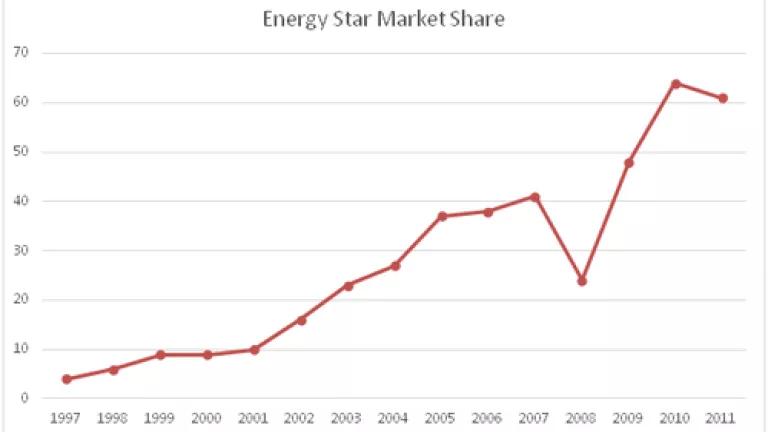
If you’re like most households in the U.S., there are routine chores that you do at least every week: vacuuming, dusting, cleaning, and laundry. Out of all of these, my favorite (if I was forced to choose) is doing laundry. It’s hard to beat the smell and feel of fresh, clean laundry right out of the dryer—although if you’re like me, you might feel guilty about the amount of water and energy that’s being used with every load of laundry. The average family washes almost 300 loads of laundry each year—that’s almost six loads every single week.
Fortunately, there are opportunities to reduce the water and energy that we use to clean clothes. Today, NRDC and the American Council for an Energy-Efficient Economy (ACEEE) are releasing a white paper, Saving Energy and Water through State Programs for Clothes Washer Replacement in the Great Lakes Region, on potential opportunities to save water and energy in the Great Lakes states by replacing less efficient, older clothes washing machines with newer, more efficient models. This is the first phase of a project to pilot an innovative clothes washer incentive program in one or more of the Great Lakes states.
Clothes washers use significant amounts of water for washing—they represent up to 20 percent of a typical household’s indoor water usage. They also consume energy while agitating clothes to remove dirt and stains, spinning clothes to remove excess moisture, and by using hot water for some cleaning cycles. However, appliance standards have played a critical role in reducing the amount of water and energy that these appliances use, and by consequence, have saved consumers money. Between 1987 and 2010, the average energy use of clothes washers has declined by 75 percent. And the newest efficiency standards for residential clothes washers will save an estimated 160 billion gallons of water by 2025—that’s enough to meet the daily needs of nearly 3 million people.
To encourage customers to replace their older, less efficient clothes washers with new ones, many utilities in the U.S. provide appliance rebates. Most of these programs target ENERGY STAR washers, which on average use 20 percent less energy and 35 percent less water than comparable washers. In part because these washers result in such significant savings for customers, their market share has increased steadily.
The market share of ENERGY STAR-rated residential clothes washers from 1997 to 2011 (Data from ENERGY STAR)
Clothes washer incentive programs largely have been offered by electric and gas utilities, but there are a few water utilities in areas including California, Denver, CO, and Washington State that offer rebate programs. Yet there have been far fewer programs involving collaboration between energy and water utilities. A partnership among energy, water, and wastewater utilities to increase the efficiency of clothes washers in use would benefit all parties. Such a program would help:
- Energy utilities to achieve annual energy savings targets that are often mandatory;
- Water and wastewater utilities to save resources associated with finding new water supplies, and upgrading and maintaining water treatment and collection/distribution systems; and
- Customers to save money on their utility bills.
Our report lays the foundation for such an effort among water and energy utilities in the Great Lakes region. In the next steps of this project, we’ll be using information gleaned from our research to develop and implement an innovative pilot program in one or more Great Lakes states that reduces the water and energy we use to wash our clothes. While that may not make doing laundry more enjoyable, it may help to assuage some of the guilt you feel the next time you throw clothes into the washing machine.
